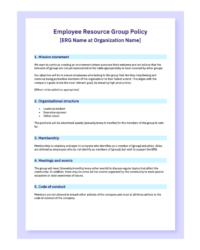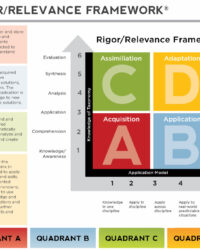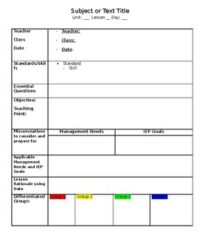Every educator knows the power of a good start to the day. It sets the tone, builds community, and prepares students for learning. A well-orchestrated morning meeting can transform a chaotic beginning into a calm, connected, and focused experience for everyone in the classroom. It is a time for students to feel seen, heard, and valued, fostering a positive learning environment that carries through the entire day.
However, simply “having” a morning meeting isn’t enough. To truly unlock its potential, thoughtful planning is essential. That’s where a structured approach comes in handy. It ensures consistency, relevance, and engagement, moving beyond just a quick check-in to a meaningful routine. We are talking about leveraging a robust morning meeting lesson plan template to guide your daily interactions and maximize their impact on student well-being and academic readiness.
The Essential Elements of a Successful Morning Meeting Structure
A truly effective morning meeting is more than just a quick hello; it is a carefully crafted sequence designed to build community, foster social-emotional learning, and transition students smoothly into the academic day. Think of it as a mini-lesson in itself, with clear objectives and engaging activities. While the exact content will vary based on your students’ age and your classroom culture, the foundational components remain consistent, providing a reliable framework that ensures every meeting contributes positively to the learning environment.
The core structure of most successful morning meetings includes four key components: a greeting, a sharing activity, a group activity, and a morning message. Each part serves a distinct purpose, working together to create a cohesive and impactful experience. The greeting ensures everyone feels acknowledged and connected right from the start. The sharing time builds empathy and listening skills, allowing students to express themselves in a safe space. The group activity promotes cooperation and strengthens classroom bonds through fun, collaborative play or discussion. Finally, the morning message sets the tone for the day, communicating important information and preparing students for the learning ahead.
Implementing these components with intention can transform your daily routine. It moves the morning meeting from a simple formality to a dynamic tool for classroom management and community building. This consistent structure provides predictability for students, which is incredibly beneficial, especially for younger learners or those who thrive on routine. It also gives you, as the educator, a clear roadmap, reducing the need to improvise each morning and allowing you to focus on facilitating meaningful interactions.
The beauty of this framework lies in its adaptability. While the four components are standard, the specific activities within each can be endlessly varied to keep things fresh and engaging. This flexibility allows you to tailor your morning meetings to current events, classroom themes, or specific social-emotional skills you are focusing on. It means your morning meeting lesson plan template can be a living document, evolving with your students’ needs and interests throughout the school year, ensuring it remains a vibrant and essential part of your daily rhythm.
Crafting Engaging Greetings
A good greeting sets the stage for connection. It should be inclusive and encourage eye contact and verbal exchange. Consider having students greet each other by name, offering a handshake, or even a silly personalized greeting. For younger children, a call and response song can be very effective.
Creative Sharing Ideas
Sharing time is vital for developing speaking and listening skills. Encourage students to share about their weekend, a personal accomplishment, or even a single word describing their current feeling. Provide sentence stems to support hesitant speakers, and ensure everyone has a chance to participate.
- Two Truths and a Lie
- Show and Tell (themed or free choice)
- One Word Check-in
- “If I were an animal, I’d be a…”
- Rose, Bud, Thorn (something good, something new, something challenging)
Customizing Your Template for Diverse Learners
While a morning meeting lesson plan template provides a fantastic starting point, its true power comes from its ability to be adapted to the unique needs and personalities of your students. No two classrooms are exactly alike, and what works beautifully for one group might need slight adjustments for another. This customization ensures that every student feels included, engaged, and benefits fully from the daily routine, making the meeting truly reflective of your classroom community.
Think about the age range, developmental stages, and cultural backgrounds present in your classroom. For example, a greeting involving physical contact might be perfect for a kindergarten class but less appropriate for middle schoolers, who might prefer a more verbal or gestural greeting. Similarly, the complexity of the sharing prompts or group activities should align with their cognitive and social-emotional capacities. It’s about meeting your students where they are, making the morning meeting an accessible and enriching experience for all.
Don’t be afraid to experiment and observe what resonates most with your students. Pay attention to their engagement levels, their responses, and even their suggestions for future activities. A truly effective morning meeting evolves over time, informed by student feedback and your ongoing assessment of their needs. This iterative process of planning, implementing, observing, and adjusting is what transforms a generic template into a highly personalized and impactful daily ritual for your classroom.
- Vary the duration of each component based on student attention spans.
- Offer visual aids or sentence starters for English Language Learners.
- Incorporate movement breaks or calming activities as needed.
- Allow student choice in sharing topics or group activities when appropriate.
- Regularly solicit feedback from students on what they enjoy or find helpful.
Establishing a consistent morning meeting routine, guided by a well-thought-out plan, is one of the most effective strategies for cultivating a positive classroom climate. It’s a small investment of time each day that yields significant returns in terms of community building, social-emotional development, and overall readiness for learning. The structure provides predictability, while the content offers opportunities for genuine connection and meaningful engagement, fostering a sense of belonging among all learners.
Embracing this daily practice with intentionality can truly transform the beginning of your school day. It empowers students, builds vital social skills, and ensures that everyone starts on a positive and connected note. By thoughtfully designing and consistently implementing your morning meetings, you’re not just running a routine; you’re nurturing a vibrant, supportive, and harmonious learning environment where every student feels ready to thrive.


